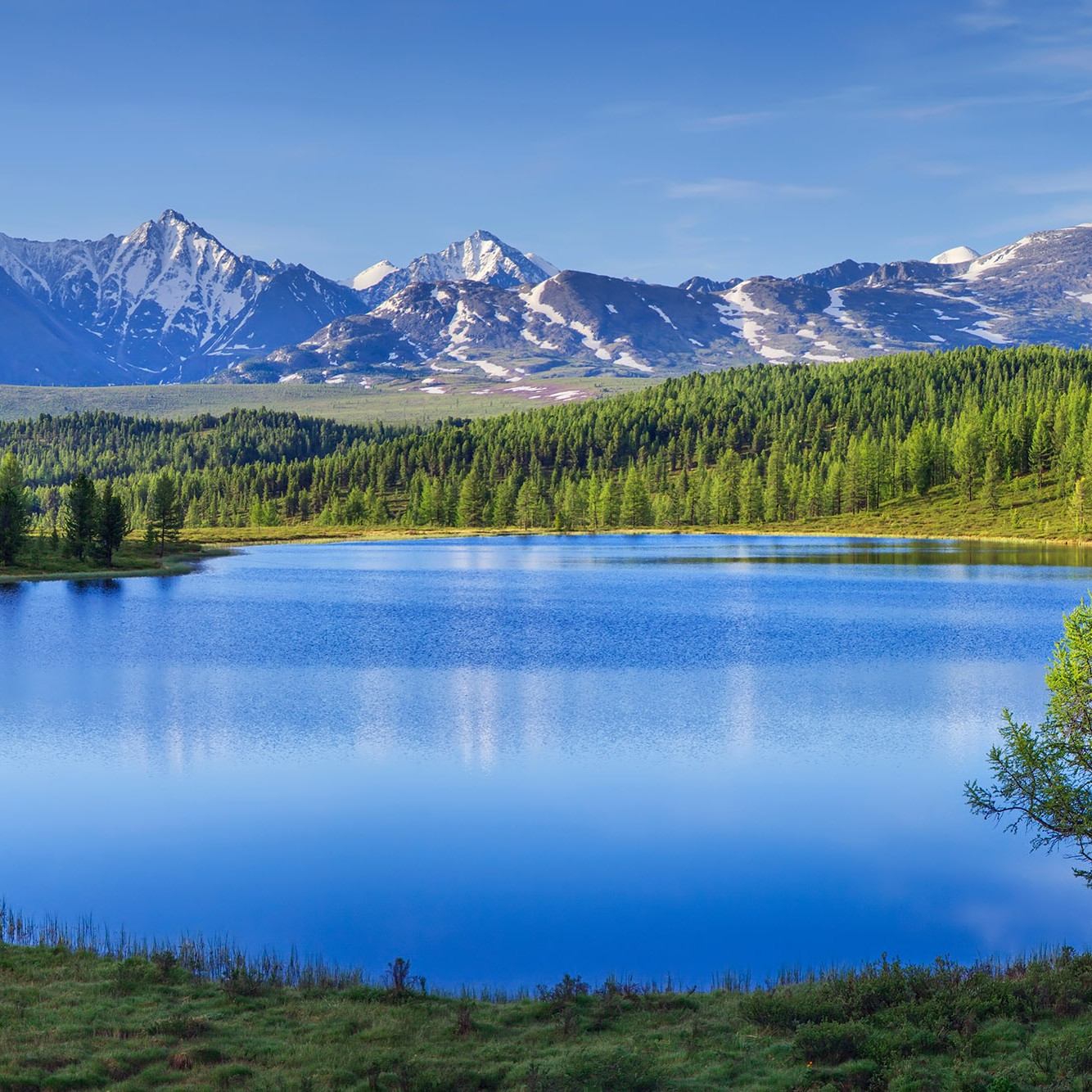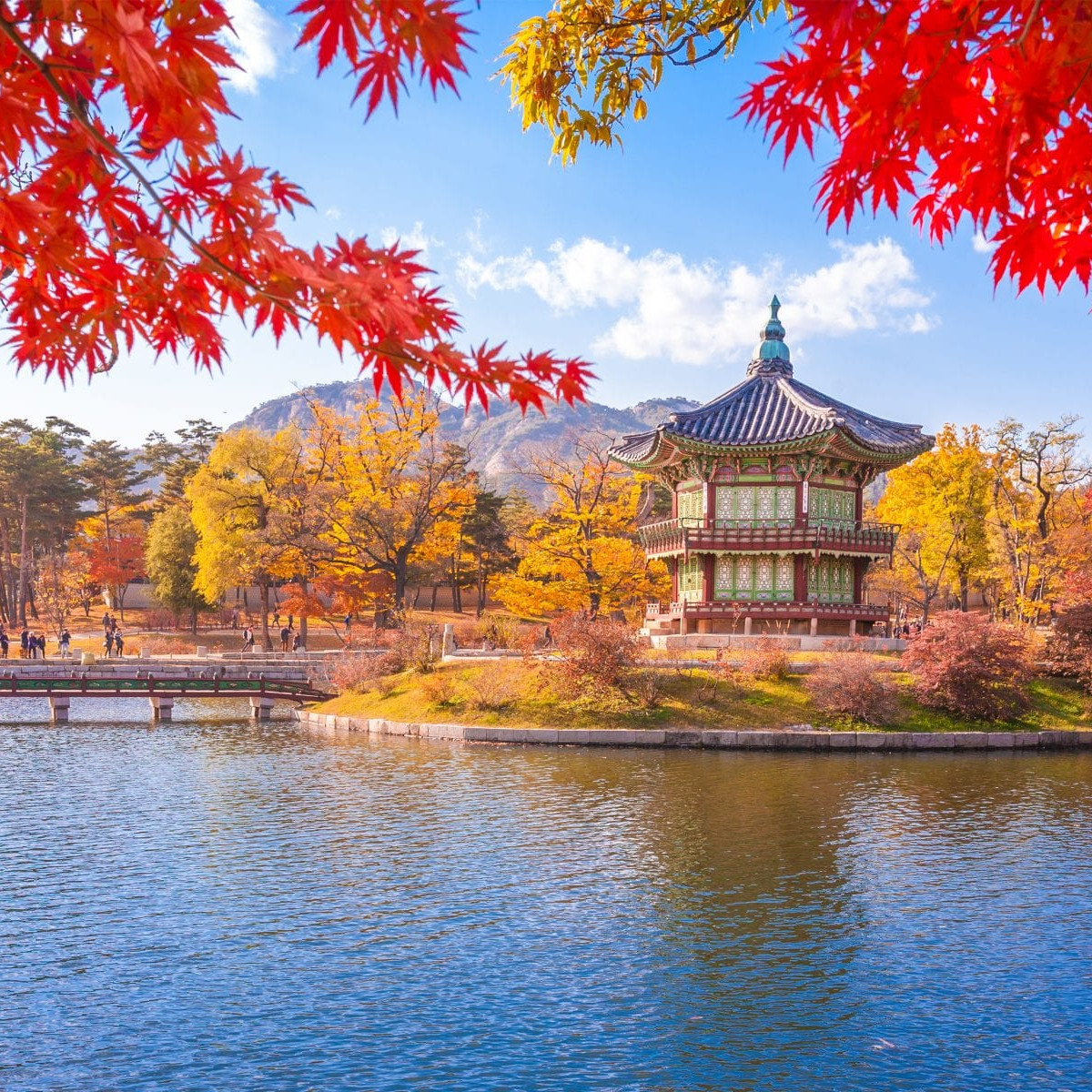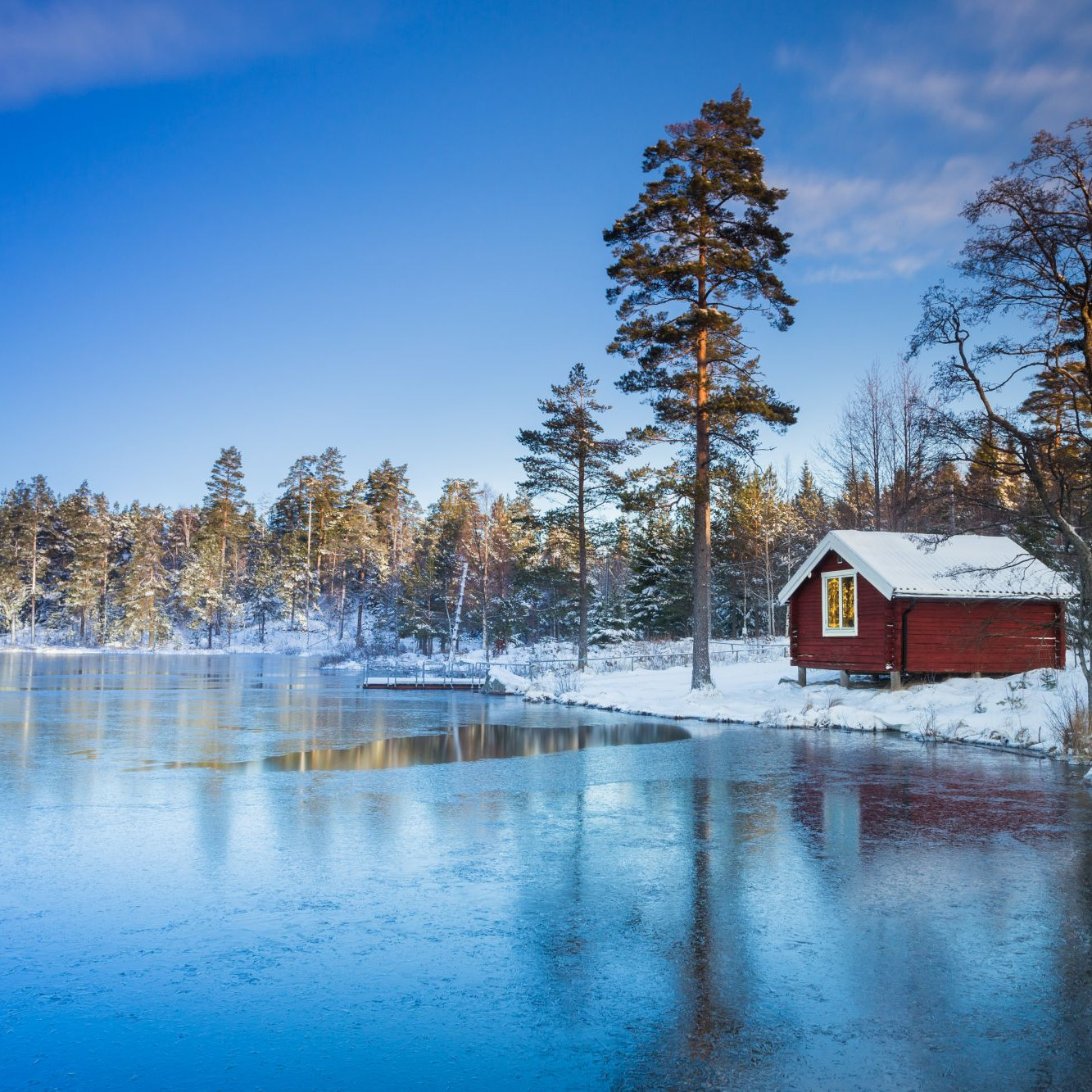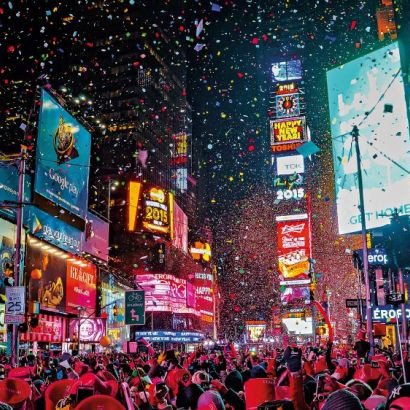Why Visit Romania
HISTORY
Romania has a rich history, with some of the oldest human remains from the first homo sapiens found in the country. Inhabited since prehistoric times, the country was later occupied by ottomans, turks, hungarians, and the Soviet Union. Its tumultuous past shaped its culture, creating a mix that makes Romania unique.
LANDSCAPES & NATURE
Romania is the most bio geographically diverse country in the European Union. The country is blessed with the Carpathian Mountains, green hills, forests, beaches, the Danube Delta, the Black Sea, underground glaciers and much more than will take your breath away. Thanks to this biodiversity, a wide array of nature thrives in the country, highlighting the European wildcat, the Eurasian lynx, the red fox, the golden jackal, the grey wolf and is especially famous for the population of over 6000 brown bears living in the country, one of the largest in the continent.
ARCHITECTURE & CASTLES
Romania has a rich history, with very well preserved architecture that allows you to travel back in time. The country is home to 8 UNESCO World Heritage sites, highlighting the painted churches of Moldavia, the Dacian fortresses, the historic Sighișoara, the Danube Delta, The Wooden Churches of Maramureș, as well as one of the biggest collection of castles in the continent, remainings of its medieval heritage.
FOOD
Romania is also a paradise for food lovers, with a rich culinary tradition influenced by its neighboring countries. From hearty stews and grilled meats to delicious pastries and traditional cheese, Romanian cuisine offers a delightful mix of flavors and local specialties.
AFFORDABILITY
One of the major advantages of visiting Romania is its affordability. Compared to other European destinations, Romania offers excellent value for money, with affordable accommodation, dining, and transportation options. Travelers can enjoy a fulfilling experience without breaking the bank.
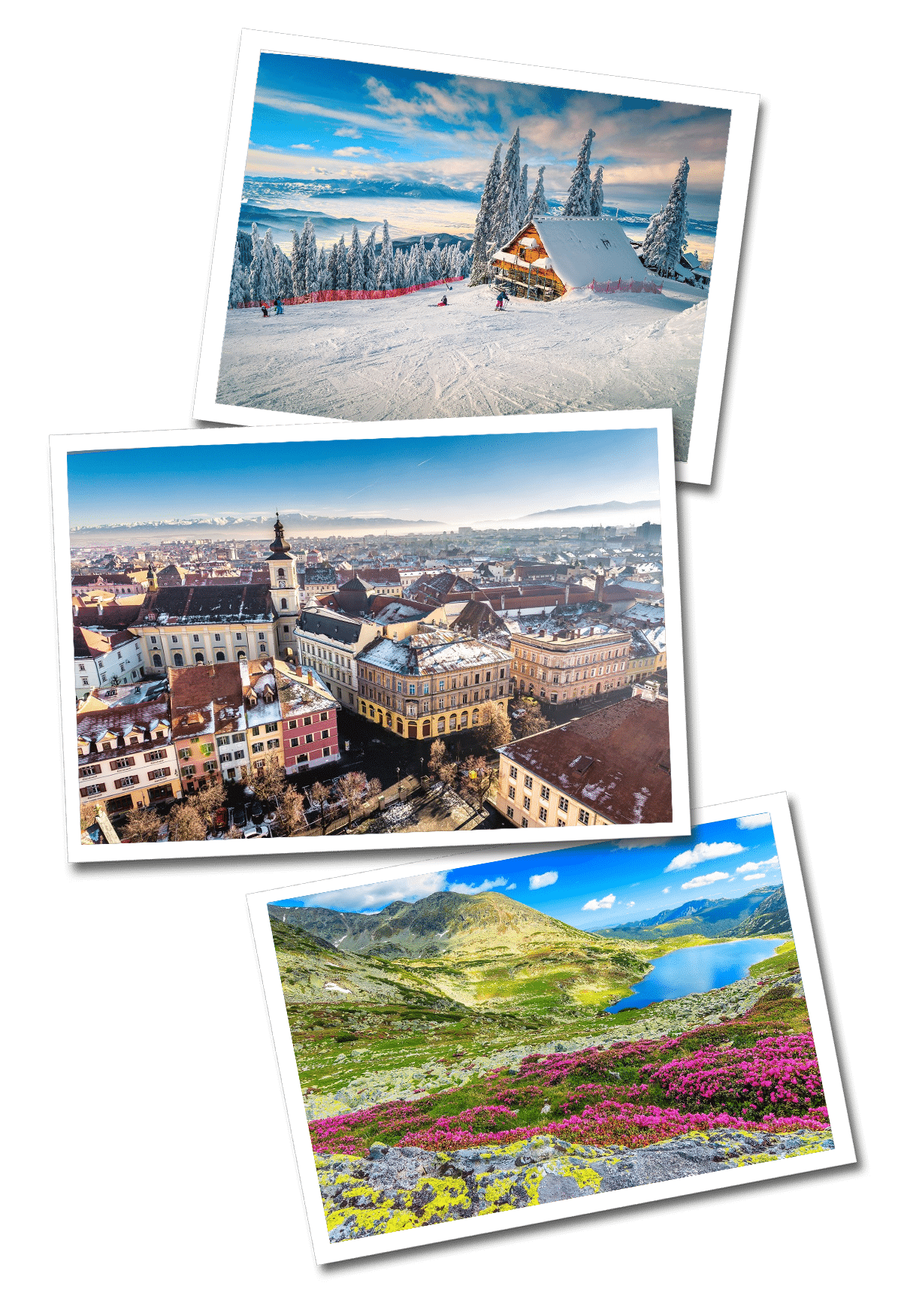
Located at the crossroads of Central, Eastern, and Southeastern Europe, Romania is a country filled with unique history, stunning landscapes, charming medieval cities, castles and incredible architecture, a captivating destination that offers a wide range of experiences for travelers.

Why Visit Romania
HISTORY
Romania has a rich history, with some of the oldest human remains from the first homo sapiens found in the country. Inhabited since prehistoric times, the country was later occupied by ottomans, turks, hungarians, and the Soviet Union. Its tumultuous past shaped its culture, creating a mix that makes Romania unique.
LANDSCAPES & NATURE
Romania is the most bio geographically diverse country in the European Union. The country is blessed with the Carpathian Mountains, green hills, forests, beaches, the Danube Delta, the Black Sea, underground glaciers and much more than will take your breath away. Thanks to this biodiversity, a wide array of nature thrives in the country, highlighting the European wildcat, the Eurasian lynx, the red fox, the golden jackal, the grey wolf and is especially famous for the population of over 6000 brown bears living in the country, one of the largest in the continent.
ARCHITECTURE & CASTLES
Romania has a rich history, with very well preserved architecture that allows you to travel back in time. The country is home to 8 UNESCO World Heritage sites, highlighting the painted churches of Moldavia, the Dacian fortresses, the historic Sighișoara, the Danube Delta, The Wooden Churches of Maramureș, as well as one of the biggest collection of castles in the continent, remainings of its medieval heritage.
FOOD
Romania is also a paradise for food lovers, with a rich culinary tradition influenced by its neighboring countries. From hearty stews and grilled meats to delicious pastries and traditional cheese, Romanian cuisine offers a delightful mix of flavors and local specialties.
AFFORDABILITY
One of the major advantages of visiting Romania is its affordability. Compared to other European destinations, Romania offers excellent value for money, with affordable accommodation, dining, and transportation options. Travelers can enjoy a fulfilling experience without breaking the bank.
- Name: Romania
- Capital: Bucharest
- Official Languages: Romanian
- Currency: Romanian leu
- Time Zone: UTC+2
- Name: Romania
- Capital: Bucharest
- Official Languages: Romanian
- Currency: Romanian leu
- Time Zone: UTC+2
Bucket List
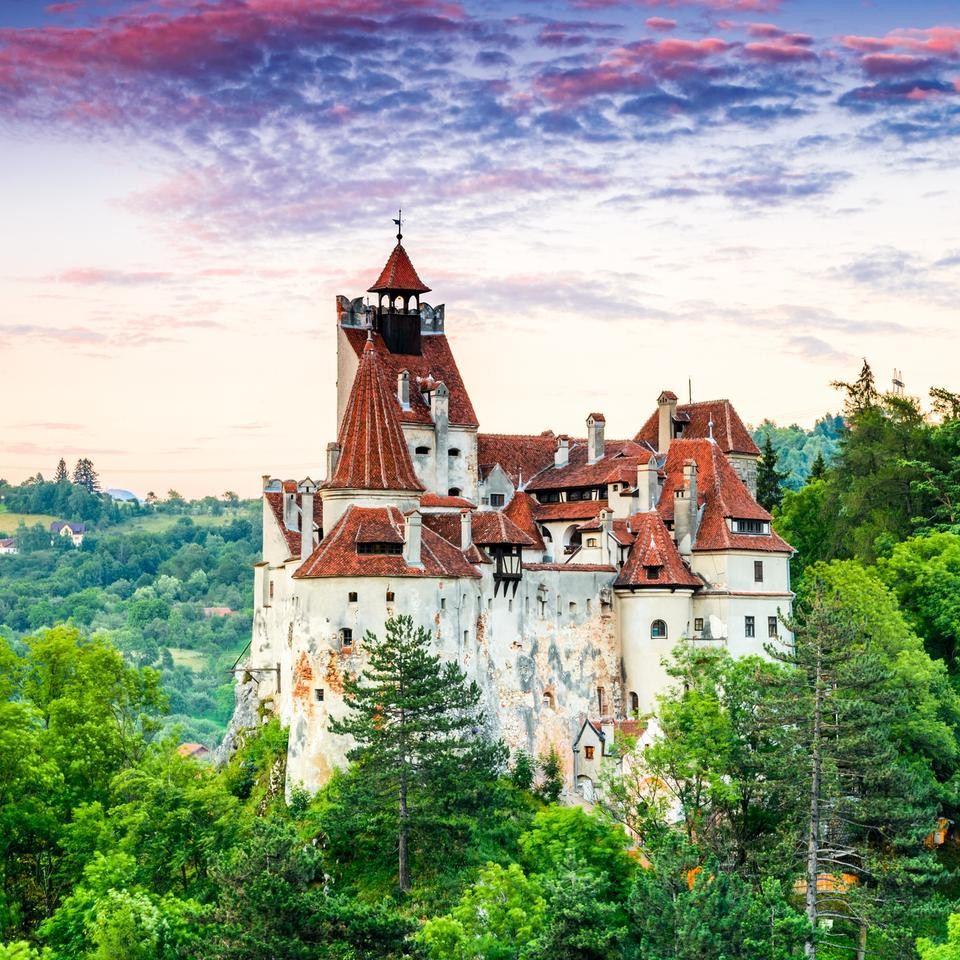
Visit the Dracula’s Castle
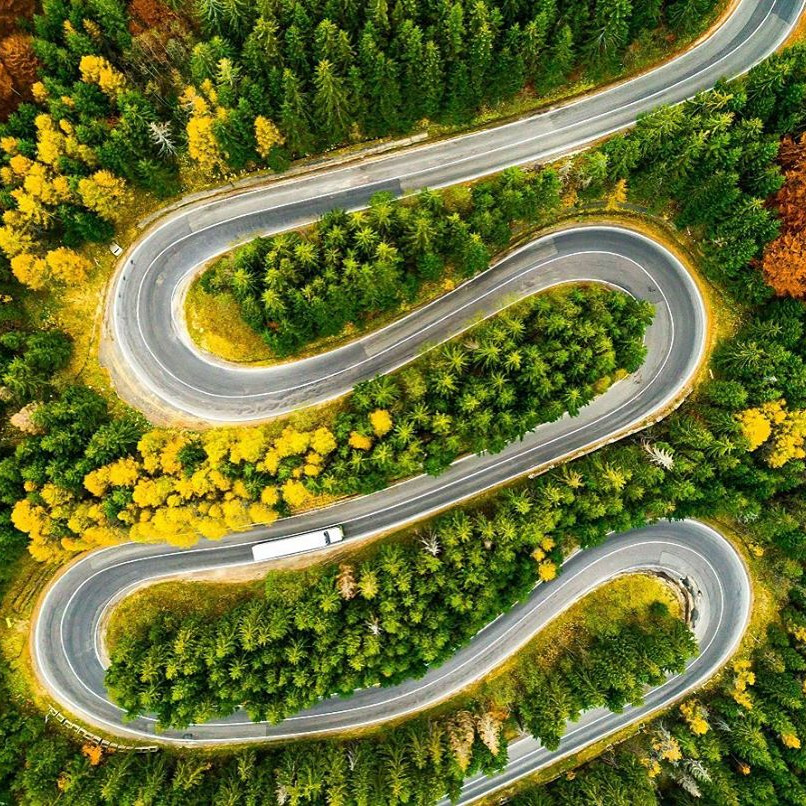
Drive the Transfagarasan Highway
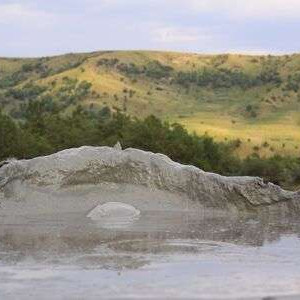
Explore the Berca Mud Volcanoes
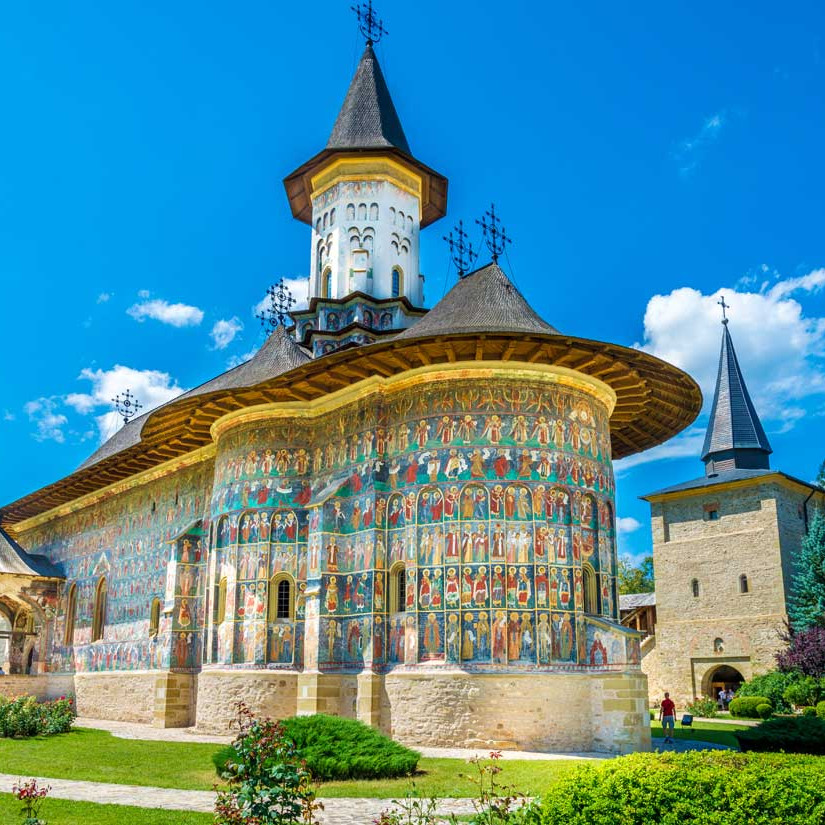
Admire the Painted Monasteries of Moldavia
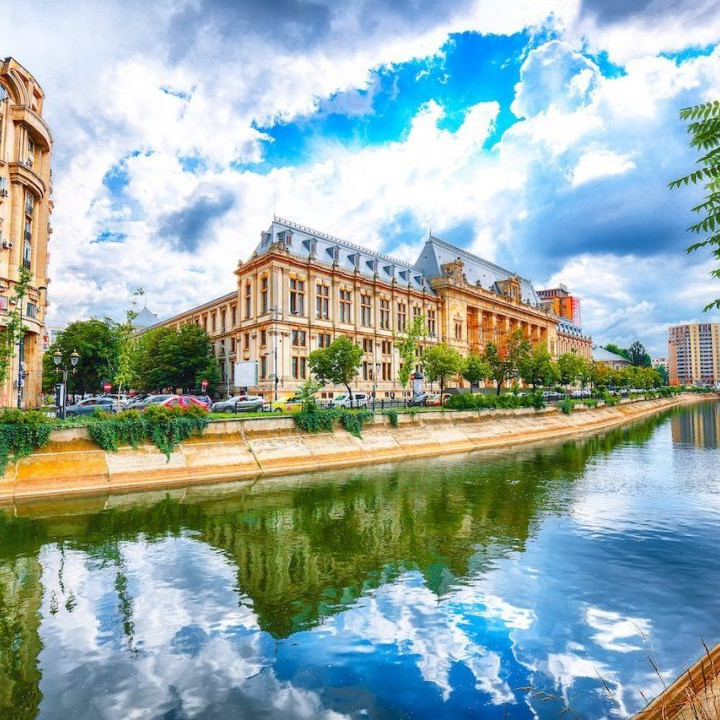
Wander around Bucharest
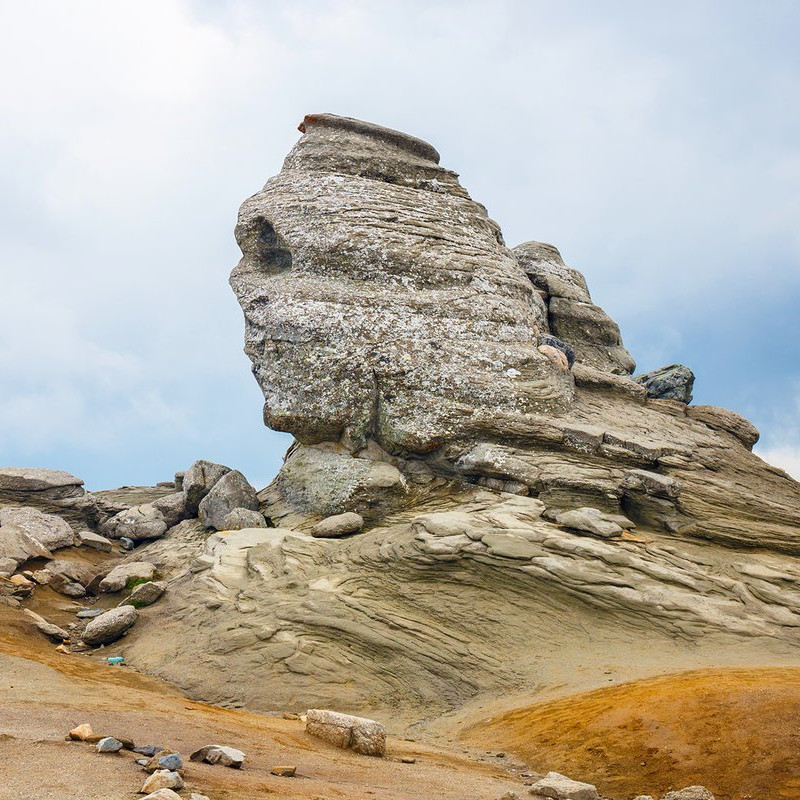
Visit the Sphinx in the Bucegi Mountains
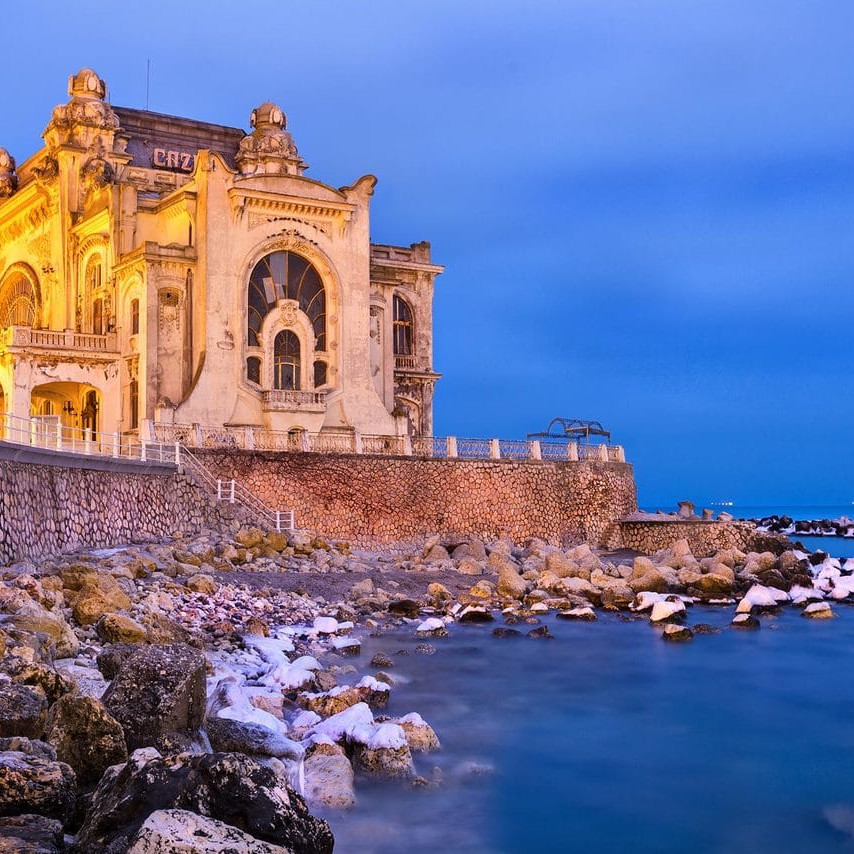
Explore the abandoned Constata Casino
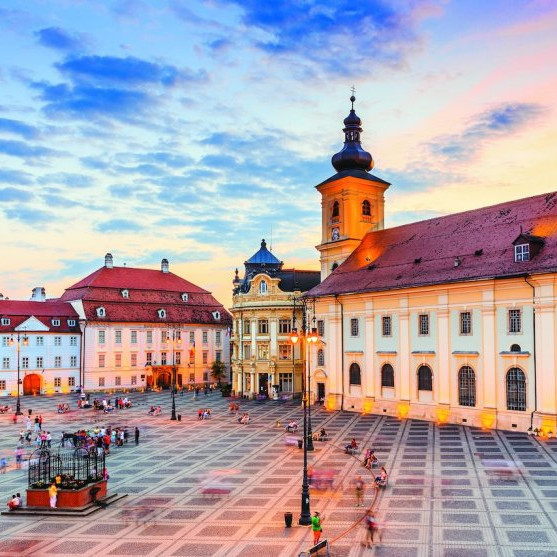
Visit Sibiu in Transylvania
What to expect
LANGUAGE
Romania’s official language is Romanian. As the country’s native tongue, Romanian is widely spoken by the majority of the population. While English is spoken and understood in major cities and tourist areas, it’s helpful to have some basic knowledge of Romanian or carry a translation tool to enhance your interactions with locals and fully immerse yourself in the culture.
ELECTRICITY
In Romania the standard voltage is 230V and the frequency is 50 Hz. That’s the standard voltage in the UK, Europe, Australia and most of Asia and Africa; If you are traveling from the US you will need an adaptor.
CURRENCY
The Romanian leu the official currency in Romania. Other foreign currencies might be accepted at major hotels and tourist attractions but not anywhere else. You are able to exchange your currency at the airport, banks, exchange houses or withdraw directly from the ATM. Credit cards are widely accepted and ATM’s are widely available (except for remote areas). 1 USD equals 4.20 leus (as of 2023).
CLIMATE
Romania has a temperate-continental climate with 4 seasons. Summers are hot winters cold. The average annual temperature is 51.8 °F (11 °C ) in the south and middle-south and 46.4 °F (8 °C) in northeast.
SAFETY
Romania is a safe country to travel to, even for female travelers. Petty crime such as pickpocketing could happen, and caution is advised, just like in any other tourist destination.
How to get around
When traveling around Romania, there are several transportation options available to explore the country’s diverse landscapes and attractions. Here are the main ways to get around:
- By car: Renting a car gives you the freedom to explore Romania at your own pace, especially if you plan to visit rural areas or remote regions. The road network is well-developed, and major cities are connected by highways. However, be aware that driving conditions in some rural areas may be more challenging.
- By train: Romania has an extensive train network that connects major cities and towns. Trains are a popular and affordable mode of transportation, offering comfortable seats and scenic views of the countryside. It’s advisable to book tickets in advance, especially for long-distance or overnight journeys.
- By bus: Buses are a convenient option for traveling between cities and towns in Romania. They are frequent, affordable, and cover both popular tourist destinations and remote areas. Bus terminals are usually located near city centers, and tickets can be purchased at the station or online.
- By air: If you need to cover long distances quickly, domestic flights are available between major cities in Romania. Bucharest, the capital, has the largest international airport, while other cities like Cluj-Napoca, Timisoara, and Iasi also have international connections.
- By public transportation: Within cities, public transportation networks including buses, trams, and metros are reliable and cost-effective. In Bucharest, the metro system is an efficient way to navigate the city, while buses and trams are commonly used in other urban areas.
It’s worth noting that while public transportation options are available, some remote regions and natural attractions may require additional planning or private transportation arrangements.
Visa Policy
Romania has a visa policy that varies depending on the nationality of the visitor. The following are the general visa requirements for different categories of travelers:
- EU/EEA and Swiss citizens: Citizens of the European Union (EU), European Economic Area (EEA), and Switzerland can enter Romania with a valid passport or national ID card and stay for an unlimited period.
- Schengen Area citizens: Citizens of Schengen Area countries, such as France, Germany, Italy, Spain, and others, can enter Romania with a valid passport or national ID card and stay for up to 90 days within a 180-day period. No visa is required.
- Non-EU/EEA citizens: Citizens of countries outside the EU/EEA generally require a visa to enter Romania. The visa requirement varies based on the traveler’s purpose of visit, duration of stay, and their country of citizenship. Some countries that require a visa to visit Romania include India, China, Russia, Turkey, Brazil, and many others. Travelers from these countries should apply for the appropriate visa at the nearest Romanian embassy or consulate before their trip.
- Visa-exempt countries: Romania has visa exemption agreements with several countries. Citizens of these countries can enter Romania without a visa for a specified period. Some visa-exempt countries include the United States, Canada, Australia, Japan, South Korea, and several others. The duration of stay for visa-exempt travelers varies, ranging from 30 to 90 days.
It’s important to note that visa policies can change, and it is recommended to check with the Romanian embassy or consulate in your home country or the Ministry of Foreign Affairs of Romania for the most up-to-date visa requirements and regulations based on your nationality.
SUBSCRIBE!
Are you a globetrotter? Join our platform and get exclusive travel tips, getaways and more!
Russia
Travel Russia, a country with rich history and an incredible diversity of landscapes, climates cultures and cultures. I promise, is more..
South Korea
Travel South Korea, a fascinating country with a rich history, vibrant culture, stunning natural scenery, and mouth-watering cuisine...
Sweden
Travel Sweden, a country full of royal tradition and an ideal cultural destination. Filled with palaces, medieval cities, natural wonders..
China
Located in East Asia, China is the world's most populous country, home to a millenaire culture and one of the oldest empires in the world..
Russia
Travel Russia, a country with rich history and an incredible diversity of landscapes, climates…
South Korea
Travel South Korea, a fascinating country with a rich history, vibrant culture, stunning natural…
USA
Travel the USA, a country with amazing and diverse natural wonders, vibrant cities, unique mix of…


